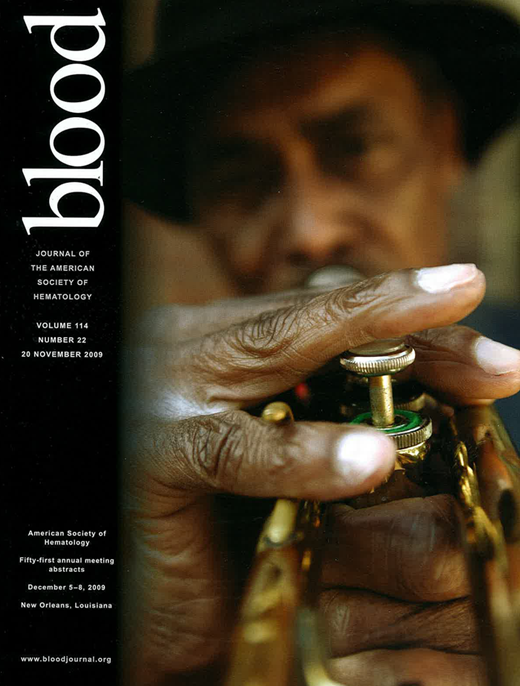Abstract
Abstract 2280
Poster Board II-257
The HLA Class II antigen DR15 (common alleles 1501, 1502) is of interest in the pathobiology of T-lymphocyte mediated marrow failure (myelodysplastic syndrome (MDS), severe aplastic anemia (SAA) and paroxysmal nocturnal hemoglobinuria (PNH). Available data suggest that the presence of DR15 in patients with MDS is associated with an increased response rate to immunosuppressive therapy (IST) with ATG. While DR15 is overrepresented in patients with SAA and PNH, its presence has not been clearly shown to correlate with outcome after hematopoietic stem cell transplant in these diseases. We studied 1422 patients with SAA (30% were DR15+) who received HLA-identical sibling bone marrow (85%) or peripheral blood progenitor cells (15%) and were transplanted in 1990 – 2006 to determine whether the presence of HLA DR15 affected hematopoietic recovery, graft-versus-host disease or overall survival. The study was confined to matched sibling transplants to eliminate HLA-disparity as a driving force for any observed differences. High resolution HLA typing to discriminate between DR15 and DR16, the serological splits of DR2 was available for all subjects. Most patients (80%) had idiopathic SAA and 50% of patients were Caucasian. Patient, disease and transplant characteristics of patients with and without DR15 were similar. Proportions of patients who had received prior IST were similar among those with and without DR15. In multivariate analysis, after adjustment for significant factors, neutrophil recovery at day 28 (odds ratio [OR] 1.02, p=0.905), platelet recovery at day 100 (OR 0.95, p=0.776), secondary graft failure at 2 years (OR 0.66, p=0.123), acute (hazard ratio [HR] 0.88, p=0.345) and chronic (HR 1.09, p=0.519) graft-versus-host disease and overall mortality (HR 1.22, p=0.102) risks were similar in patients with and without DR15. Factors associated with higher mortality after transplantation included aracteristics as reported previously, including age older than 40 years (HR 2.74, p<0.001), poor performance score at transplantation (HR 1.72, p<0.001), non-Caucasians (HR 1.40, p=0.005), transplantation of peripheral blood progenitor cells (HR 1.43, p=0.019), transplantations before 2001 (HR 1.45, p=0.006) and conditioning regimens with cyclophosphamide alone (HR 1.44, p=0.022), cyclophosphamide with busulfan (HR 1.71, p=0.001) and fludarabine with other agents (HR 2.19, p<0.001). Agents used with fludarabine were: cyclophosphamide (n=54), busulfan (n=32) and monoclonocal antibody or irradiation (n=14). The 5-year probabilities of overall survival (after adjusting for the above factors that had an adverse effect on survival) were 79% in patients who were DR15 negative compared to 75% in those who were DR15+. Based on the sample size and a type I error rate of 5%, the probability of detecting a 5% difference in overall survival between the groups is 70% and a 10% difference, 98%. In conclusion, the presence of DR15 did not impact clinical outcomes after HLA-identical sibling transplantation for severe aplastic anemia.
No relevant conflicts of interest to declare.
Author notes
Asterisk with author names denotes non-ASH members.

